How Long Do Garden Snails Live?

Garden snails are fascinating creatures often found meandering through your backyard or appearing as unexpected guests on your homegrown produce. You may have wondered, “How Long Do Garden Snails Live?” This article will shed some light on the lifespan of garden snails and the factors that influence it.
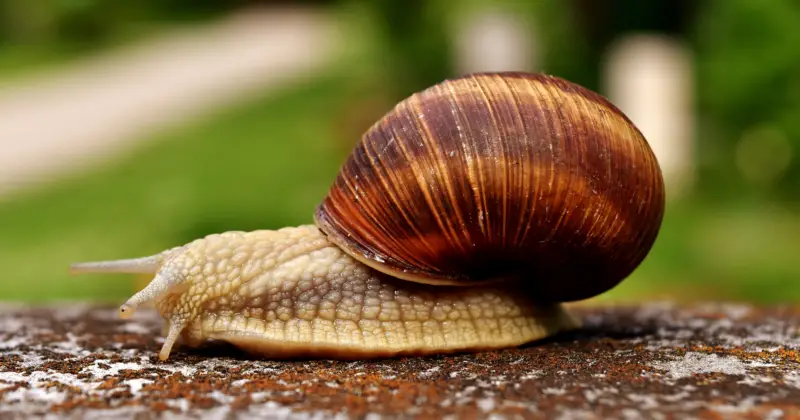
On average, garden snails have a lifespan of about 3 to 5 years. However, some snails have been known to live up to 10 years or more in ideal conditions. The actual lifespan of a garden snail can vary depending on various factors such as its species, environment, and predators. Different species of garden snails have varying lifespans.
Understanding the lifespan of garden snails can provide insights into their role in the ecosystem and how to manage their presence in your garden. In the following sections, we will explore the factors that contribute to the longevity of these creatures and how their lifespan compares with other common garden insects.
Contents
Table of Contents
Garden Snail Overview

Garden snails, Helix aspersa or Cornu aspersum, are small creatures found in gardens, forests, meadows, and urban areas. Their brownish shell and slimy body can easily identify them. These snails are common in landscapes and are one of the most proliferated terrestrial mollusks, making them a familiar sight in various environments.
As you may already know, garden snails are active day and night and thrive in wet and humid conditions. The average garden snail’s lifespan is about 2 to 5 years in the wild. However, some individual snails have been known to live up to 10 years in captivity.
A fascinating aspect of their life is their ability to secrete a slime for several reasons. One purpose of this slime is to protect their delicate bodies from harm. Another reason is to aid in their movement by creating a lubricated surface for them to glide on.
Apart from finding them in your yard, you might have also encountered them in cultural contexts. For example, the Roman or Apple snail, closely related to the garden snail, is a popular delicacy in certain cuisines.
In conclusion, understanding garden snails can give you a deeper appreciation of their unique biology, behavior, and role in the ecosystem. Knowing their habitat preferences and lifestyle can also help you manage them more effectively in your garden or appreciate their presence in nature.
Life Span of Garden Snails
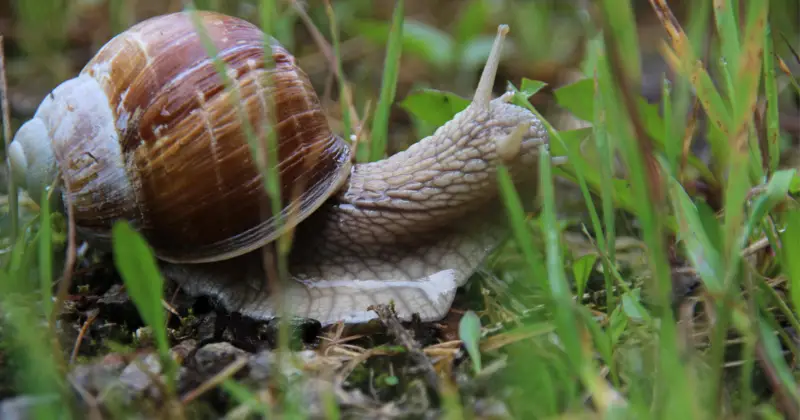
When it comes to the life span of garden snails, you might be surprised to learn that they can live for a considerable number of years. The average lifespan of a garden snail is typically between 2 to 5 years, depending on various factors, such as diet, habitat, and predators. Garden snails living in the wild can sometimes live up to 10 years, although this is relatively rare.
Diet is a significant factor in determining the lifespan of garden snails. A healthy diet consists of various plants and decaying materials, allowing the snail to grow and thrive. A well-balanced diet can help ensure a long life if you keep garden snails in captivity.
The habitat of a garden snail also plays a crucial role in its lifespan. Garden snails require a moist environment to survive, as they can dehydrate quickly in dry conditions. Garden snails often live in the wild in lowlands, Mediterranean regions, and Western Europe. If you are keeping garden snails in captivity, it is essential to maintain a suitable habitat that includes a humid and comfortable environment.
Predators can, of course, influence the lifespan of garden snails as well. Snails have many natural predators, including birds, mammals, and other invertebrates, which can threaten survival. Watch for potential threats to your garden snails in captivity, as this can significantly affect their life expectancy.
Finally, it’s important to note that the lifespan of garden snails can vary depending on the species. The common garden snail (Helix aspersa) typically lives for an average of 3 to 4 years in captivity, while some individuals may live up to 9 or 10 years under optimal conditions.
Determinants of Life Span
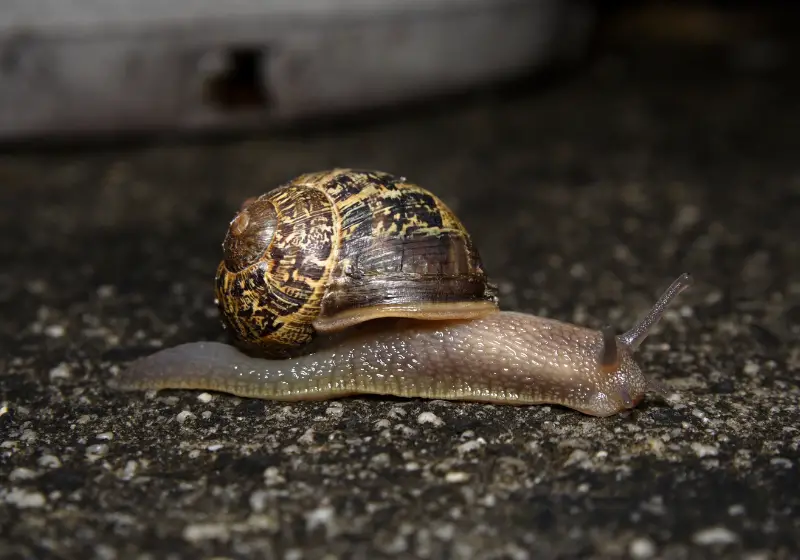
When considering the life span of garden snails, various factors play a significant role in determining their longevity. This section will discuss some primary determinants, such as feeding, water, hibernation, and environmental conditions.
Feeding: A garden snail’s diet greatly impacts its life expectancy. Ensuring your snails have a balanced and nutritious diet will contribute to their overall health and longevity. Garden snails primarily feed on plant matter, such as leaves, stems, and fruits, as well as decaying organic matter. A rich and diverse diet will ensure they receive adequate nutrients, thus increasing their chances of living longer.
Water: Hydration is essential for garden snails for their overall well-being and the proper functioning of their bodies. Snails require a moist environment to survive and thrive. Maintaining adequate moisture levels in their habitat is critical for their health and can significantly impact their life span. Misting their environment regularly with water will help keep the humidity at optimal levels.
Hibernation: During colder months, garden snails enter a hibernation-like state known as estivation to conserve energy and protect themselves from harsh conditions. This period of inactivity allows them to reduce their metabolic rate and maintain their energy reserves. Ensuring their habitat remains undisturbed during this time can help improve their chances of survival and promote a longer life span.
Environmental Conditions: The surrounding environment plays a crucial role in the life expectancy of garden snails. Ideal conditions include a temperate climate with moderate humidity and mild temperatures. Extreme weather conditions, such as intense heat or cold, can significantly hinder their ability to survive. Additionally, exposure to chemical contaminants or pollutants in their habitat can negatively affect their health and life span.
In conclusion, understanding and addressing these factors can help promote a longer, healthier life for your garden snails. Paying attention to their feeding habits, water requirements, hibernation periods, and overall environmental conditions will ensure their best chance at a long and fulfilling life.
Things You Need To Know About GARDEN SNAILS!
Life Cycle of Garden Snails
The life cycle of garden snails starts with reproduction. These hermaphrodites have male and female reproductive organs, allowing them to self-fertilize, although they prefer to mate with other snails. During mating, both individuals exchange sperm to fertilize their eggs.
After fertilization, the snails lay their eggs in small holes in the soil, generally between 30 and 120 eggs at a time. It takes about two weeks for the eggs to hatch. The baby snails, called hatchlings, emerge with soft, transparent shells that slowly harden and become more pigmented as they develop.
In their early stage, the hatchlings are vulnerable to various predators and environmental factors. They feed on vegetation, decaying matter, and even other snails. Their shells form new layers as they grow, providing better protection.
Garden snails’ life cycle usually lasts for 3 to 5 years. However, they can live up to 10 years or more under ideal conditions. Factors influencing their life span include diet, habitat, and predators. A consistent diet, comfortable living conditions, and predator safety can prolong their lives.
Not all snails go through the same growth rates or lifespan, depending on the environment and conditions they’re exposed to. Moisture is significant in their longevity, as garden snails thrive in wet, temperate climates. Dry spells or harsh weather can reduce their lifespan considerably.
To sum up, the life cycle of garden snails involves self-fertilization or mating, laying eggs, hatching, and growth. They face various challenges, adapting to their environment and reaching maturity.
Garden Snails in the Wild

As a gardener, understanding the life of garden snails in the wild can help you improve your pest control strategies. Garden snails, also known as Helix aspersa, are common in many habitats and can live up to 10 years, although their average lifespan is usually between 2 to 5 years. Various factors determine their lifespan, with diet being one of the most crucial.
In their natural habitat, garden snails dwell in areas with constant moisture, such as under rocks, in plant debris, and along hedges. They prefer humid environments since their soft bodies are prone to desiccation. You may find garden snails in your garden after rainfall, as it creates the perfect living conditions for them.
Garden snails have a keen sense of smell, which they use to find food sources, such as fruits, vegetables, and decaying plant matter. Their diet greatly impacts their ability to thrive and reproduce in the wild. Insufficient sustenance can shorten their lifespan and reduce their capacity to withstand life’s challenges in the wild1.
Predators like birds, frogs, and other small mammals actively target garden snails. Snails produce a thick layer of slime when threatened to protect themselves, making it difficult for predators to grab or see them. However, this defense mechanism isn’t fail-safe, and many garden snails ultimately fall prey to these hunters, which can impact their lifespan.
You can protect your garden by understanding how garden snails adapt to their wild surroundings. Maintain your garden’s cleanliness, clear away debris, and balance moisture to create a less attractive environment for these pesky critters.
Gardening and Garden Snails
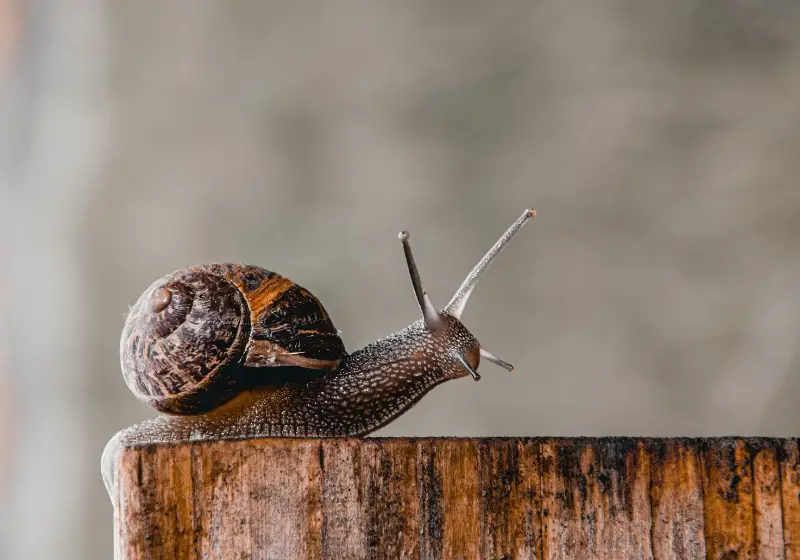
Garden snails, like the Helix aspersa or the European Brown Garden Snail, are common terrestrial gastropod mollusks. They can be fascinating creatures and agricultural pests, especially in gardens with snails’ desirable plants.
As a gardener, it’s essential to understand that the average lifespan of garden snails is about 2 to 5 years. However, some individuals may live up to 10 years in captivity. These adaptable creatures are active day and night, preferring wet, humid conditions. You may also see them in forests, meadows, and urban areas.
When dealing with garden snails, your first instinct might be to remove these pests from your plants. However, remember that not all snails are harmful. Some, like the Roman snail, can even benefit your garden as they help maintain a healthy balance in the ecosystem. Still, others, like the invasive apple snail, can cause significant damage to plants and crops. To protect your garden, it’s crucial to identify the type of snail and take appropriate action.
You can try natural alternatives to keep garden snails away from your plants without using chemical treatments. Creating barriers of crushed eggshells, copper tape, or diatomaceous earth around your plants may deter these mollusks. Additionally, you can encourage natural predators, such as birds or frogs, to visit your garden to help keep the snail population in check.
In summary, garden snails are fascinating creatures, but they can also be pests in your garden. Knowing how to identify different types of snails and taking appropriate action to protect your plants while maintaining a balanced ecosystem is crucial to keeping a healthy garden.
Garden Snails as Pets
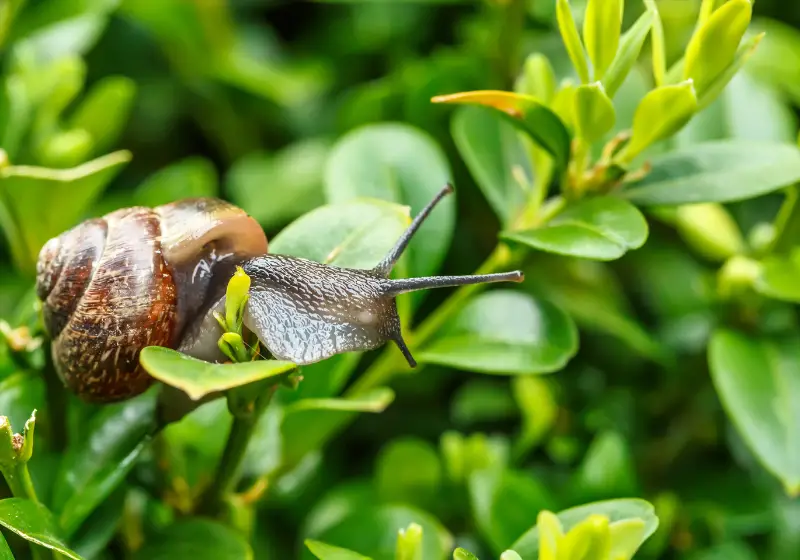
Garden snails can be interesting and low-maintenance pets, offering a unique addition to your collection. In captivity, garden snails usually have a lifespan of 2 to 5 years, but some may live up to 10 years with proper care.
A terrarium is ideal for providing a comfortable home for your pet snail. A terrarium allows for humidity control, easy cleaning, and an environment miming their natural habitat. Ensure the container has a secure lid with ventilation holes to prevent escape and maintain proper air circulation.
Providing the right nutrition is essential for your snail’s health. A balanced diet should contain plant matter, such as leafy greens, fruit, and vegetables. Occasional treats like fish flakes or cooked eggshells can offer extra nutrients. Snails need calcium to build strong shells, and a cuttlefish bone is an excellent source of calcium readily available in their habitat.
Caring for your pet snail also includes maintaining their habitat. Keep the terrarium clean and mold-free, replacing any soiled substrate with fresh, dampened material. Regularly mist the enclosure to maintain adequate humidity, taking care not to overdo it, as excess moisture can lead to health issues.
By considering all aspects of their care, you can make your garden snail a happy and fascinating addition to your family of pets.
Diet of Garden Snails
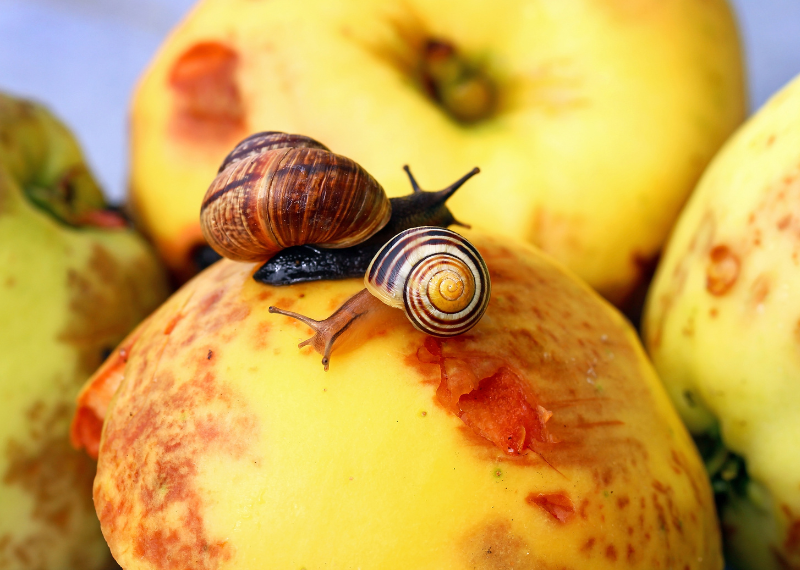
The diet of a garden snail is varied and consists of a wide range of vegetation. As herbivorous creatures, they mostly consume fresh fruits, vegetables, herbs, cereals, flowers, and bark of trees. While you may spot them frequently on fruit trees, they prefer certain plants and will eat accordingly.
When providing food for garden snails in captivity, ensure they can access fresh fruits and vegetables. You can feed them leafy greens, such as lettuce, spinach, and cabbage, and offer fruits like apples, pears, and bananas. However, remove any uneaten food to avoid attracting unwanted pests.
In addition to fresh produce, garden snails require a calcium-rich diet to maintain their strong shell. You can provide this essential mineral through crushed coral, eggshells, cuttlebone, or limestone. Sprinkle it directly onto their food or keep a small dish of calcium supplement within their habitat.
Although they primarily eat plant matter, garden snails consume decomposing organic material. Occasionally, adding small pieces of cooked meat, fish, or insects to their diet can provide them with essential nutrients and offer some variety. Ensuring a balanced diet for your garden snails will contribute to their overall health and longevity.
Physical Features of Garden Snails
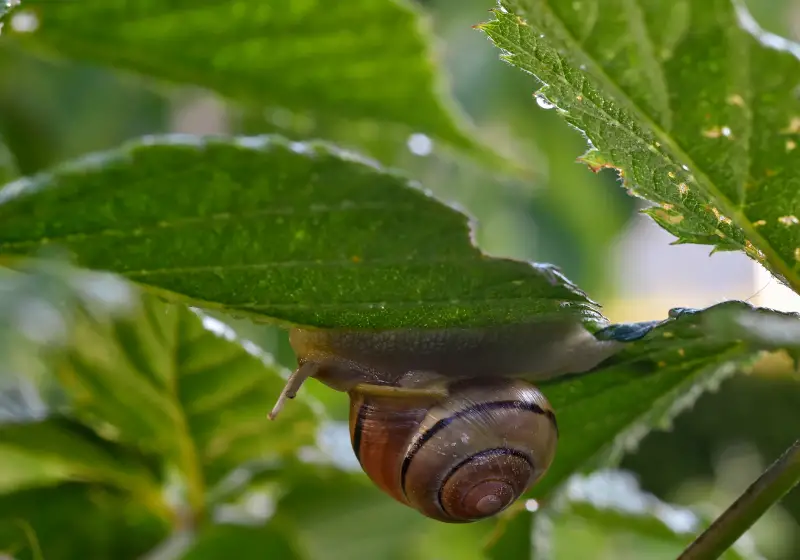
Garden snails are known for their distinctive appearance, highlighted by their spiral-shaped shells. The shell typically has a height of about 0.9-1.3 inches and a width of 0.9-1.5 inches and becomes more pronounced as the snail ages, with a lip appearing at its edge when an individual is older.
These shells protect their soft bodies and come in various colors, often reflecting the environment in which they live. As you observe garden snails, it is essential to understand their physical features for a better appreciation of these fascinating creatures.
Regarding their body size, garden snails are relatively small mollusks, with most species measuring between 0.9 and 1.5 inches. Their external shell is a spherical shape and slightly rough surface, consisting of about 4 or 5 spirals.
Growth rings and rings on the shell provide valuable information about a snail’s age. As garden snails grow, they add new layers to their shells, resulting in visible rings. By counting these rings, you can estimate the age of a snail. However, keep in mind that environmental factors may affect the accuracy of this method.
Another crucial aspect of garden snails’ anatomy is their snail mouth, equipped with a unique organ called the radula. This ribbon-like structure covered in tiny teeth allows the snail to scrape food into tiny particles before consuming it. Garden snails mainly consume decomposing plant material, fungi, and algae.
In summary:
- Shell: Height 0.9-1.3 inches, width 0.9-1.5 inches, spiral-shaped, often reflecting the environment
- Body size: Small mollusks measuring between 0.9 and 1.5 inches
- Growth rings: Indicate the age of snails, more visible in older individuals
- Snail mouth: Equipped with a radula for scraping and consuming food
By familiarizing yourself with the physical features of garden snails, you will undoubtedly gain a deeper understanding and appreciation for these unique creatures that often share our gardens and outdoor spaces.
Interaction with Other Species
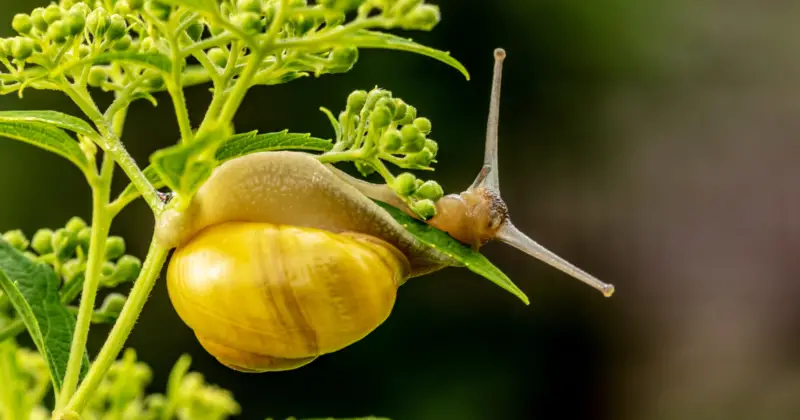
Garden snails interact with a variety of other species in their natural habitats. These interactions can have a significant impact on their survival and lifespan.
Rats and other small mammals often prey on garden snails. When they encounter a snail in their environment, they may consume it for a quick meal. This interaction presents a challenge for garden snails as they have to be on the lookout for predators like these constantly. Snails may retreat into their shells or find a hiding spot when they sense danger nearby to protect themselves.
Cats and dogs may also interact with garden snails, but these encounters are usually less harmful to the snails. While it’s unlikely that a domesticated cat or dog would eat a snail, they might play with or paw at it out of curiosity. This can lead to the snail being harmed or even killed, so keeping your pets away from garden snails when possible is important.
While garden snails predominantly face predation from certain species, they also impact other organisms within the ecosystem. For example, lizards, frogs, and worms also include garden snails in their diets. Predatory insects and other species of snails compete with garden snails for resources and may even eat them.
In conclusion, garden snails are an essential part of their ecosystems, with a complex web of interactions with various other species. As a snail owner, you have to be mindful of these relationships and keep your snails safe from harm by monitoring their environment and interactions with other animals.
Threats to Garden Snails
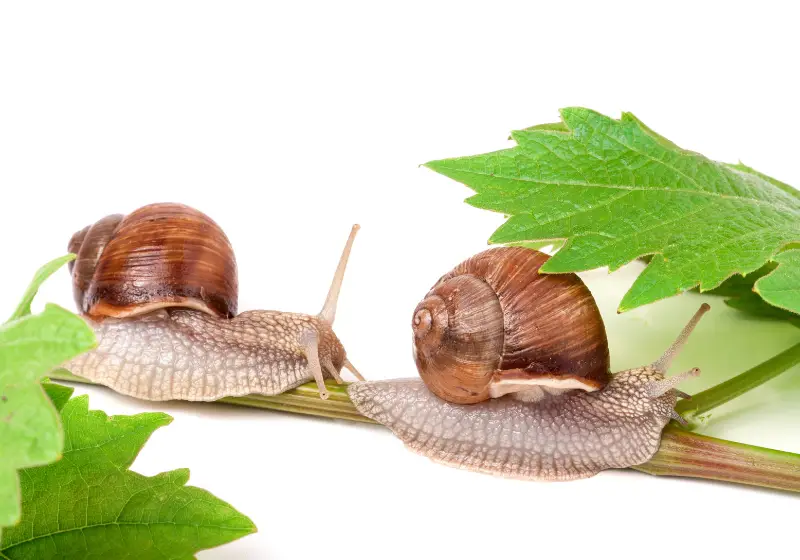
Garden snails face various environmental threats, ranging from natural predators to human activities. One significant threat to their survival is the use of pesticides. Applying these chemicals to your garden can inadvertently poison and kill pests, snails, and other beneficial creatures.
Watering your garden can both help and harm snail populations. While they thrive in wet, humid conditions, excessive watering may create unstable environments and wash away their essential habitats. Maintaining a balance is essential to keep snails and other organisms healthy.
Freezing temperatures pose another risk to garden snails. These cold conditions can lead to their death, as they cannot survive in frozen or icy environments. Snails often seek shelter in the ground or under logs and rocks to cope with this. However, prolonged exposure to freezing temperatures may decrease their chances of survival.
In addition to these obstacles, garden snails face natural predators threatening their existence. Birds, frogs, lizards, and even other species of snails may prey on them. It’s essential to consider the delicate balance of your garden ecosystem and the consequences of your actions on these small creatures. By being conscious of your gardening practices, you can contribute to a healthier environment for all organisms, including garden snails.
Garden Snails in Different Regions

While the lifespan of garden snails may vary depending on their environment, on average, they live for about 2 to 5 years. These numbers might differ in certain regions due to weather conditions, food availability, and predators.
In the United States, particularly in California, you’ll find a temperate climate that is highly favorable for garden snails. The moist and mild weather provides an ideal environment for them to thrive. Due to this, their lifespan may be longer, closer to 5 years, or even beyond in some cases.
Garden snails can be found in various regions, ranging from Great Britain to Mediterranean areas, Western Europe, North Africa, and the Middle East. This vast distribution reveals their adaptability to different climates and environments. Although their lifespan may fluctuate across these regions, one thing remains consistent: the more favorable the conditions, the longer they can live.
Remember, garden snails play a crucial role in ecosystems by serving as prey for numerous animals and aiding in plant dispersal and biodiversity through seed transportation. Understanding their lifespans in various regions helps us better appreciate their ecological importance and contribution to the balance of nature.
To extend the lifespan of snails in your garden, ensure they have access to:
- Plenty of leafy vegetables and fruits for nutrition
- Sufficient shade and hiding spots
- A damp environment, free from harmful chemicals
By acknowledging these factors, you can create a welcoming space for these slow-moving creatures to thrive and contribute to the overall health of your garden ecosystem.
Further Topics to Consider

When exploring the fascinating life of garden snails, there are several related topics that you might find interesting. These topics span their potential use as a food source, the environment they thrive in, and how you can handle their presence in your garden.
Garden snails are indeed edible and are considered a delicacy in some cultures. However, before incorporating them into your meals, you must learn about proper preparation and handling. Remember, some snails can carry parasites, so proper cooking is crucial for your safety.
While considering a snail’s natural habitat and preferences, you’ll find that they thrive in environments rich in peat and compost. These organic materials provide essential nutrients for plants and create a moist, cool, and dark environment where snails can easily hide.
Incorporating decoration elements into your garden, such as sticks and bark, will provide snail shelter and mimic their natural habitat. This will encourage them to stay in specific areas of your garden. Remember that snails also enjoy shade, so arranging these elements in shadier parts of your garden will keep them content.
Lastly, to better understand the garden snail’s relationship with its environment, study the role of the earth in their life cycle. For instance, snails find refuge and lay their eggs in the soil, emphasizing the importance of soil type and quality in their population dynamics.
Considering these factors, you will better understand garden snails and their role in their ecosystem. These points will also help you effectively manage their presence in your garden and appreciate their unique characteristics.
FAQs: How Long Do Garden Snails Live
What is the lifespan of a common garden snail?
The lifespan of a common garden snail varies depending on the species, but most live between 2 to 5 years on average. Some individual snails have been known to live up to 10 years in captivity.
What factors influence the longevity of garden snails?
The longevity of garden snails is influenced by several factors, including their environment, diet, predators, and natural threats such as extreme temperatures or diseases. Optimal living conditions, appropriate nutrition, and reduced exposure to predators can contribute to a longer lifespan.
Do pet snails live longer than wild snails?
Pet snails will likely live longer than wild snails when given proper care. In captivity, snails can benefit from a controlled environment and steady food supply, contributing to a longer lifespan of 3-5 years or even up to 10 years in optimal conditions.
How does a snail’s diet impact its lifespan?
A snail’s diet plays a significant role in its lifespan. Snails with a balanced diet rich in varied nutrients are more likely to live longer and healthier lives. Conversely, snails that don’t receive enough nutrients can suffer from malnourishment, resulting in a shorter lifespan.
What are the main threats to garden snails’ survival?
The main threats to garden snails’ survival include predators, such as birds, rodents, and some insects, as well as human activity, which can lead to habitat destruction and accidental harm. Extreme weather conditions and diseases can also pose a threat to their survival.
Can its size or shell markings determine the age of a snail?
Determining the age of a snail based on size or shell markings is not an entirely accurate method, as factors like diet and environmental conditions play a significant role in their growth and shell development. While larger snails and developed shell patterns may indicate a more mature snail, it’s not a foolproof way to determine their exact age.




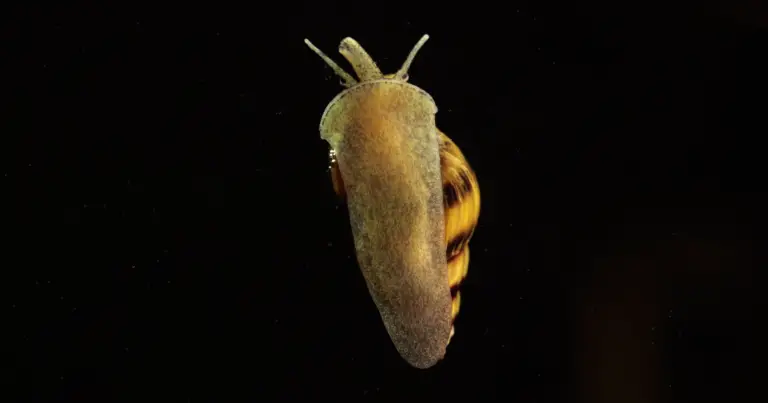

![Can You Eat Apple Snails? [Read This First!]](https://allourcreatures.com/wp-content/uploads/2021/11/eating-snails-768x514.jpg)